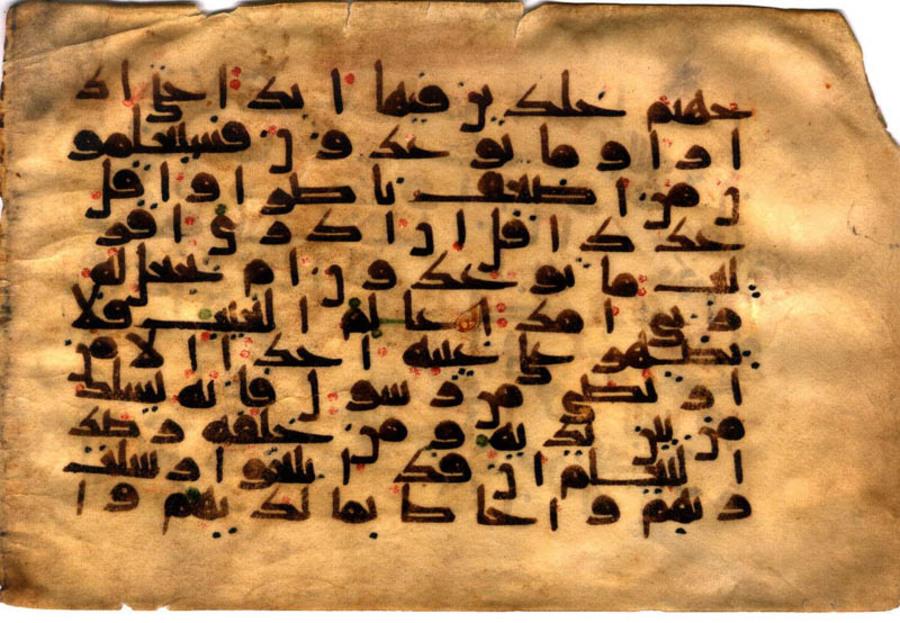Conferences and debates
Index / Activities / Conferences and debates / The sacred art of Kufic calligraphy: an aesthetic reflection
The sacred art of Kufic calligraphy: an aesthetic reflection
October 06, 20157:00 p.m.
MADRID
Casa Árabe Auditorium (at Calle Alcalá, 62).
7:00 p.m.
Free entry until the event’s capacity is reached.
In English, with simultaneous translation into Spanish.
Valérie González, an expert on Islamic visual culture, is giving this conference.
One of the most important forms of artistic expression in Islam is Kufic calligraphy. It was precisely in this form of writing that God’s word in the Qur’an was taken down with devotion at the beginnings of Islam’s history.
Kufic calligraphy incarnates the foundational concept of “logocentrism” which defines Islamic metaphysics and spirituality. We could succinctly define this concept by saying that “logocentrism” characterizes cultures whose system of values and metaphysical construction lies in speech, language and writing, namely its “logos.” In Islam, God is known and knowable only through language, which means that the divine is “logos” from the human perspective. Therefore, if we adhere to the religious meaning of the adjective “Islamic,” any cultural or artistic expression thus categorized in some way or another bears features of logocentrism. In the sacred art of Islamic writing, the great beauty of the aesthetic experience of Kufic calligraphy emphasizes and enhances the message received from God, which the object in and of itself is supposed to convey. By performing this basic act of sublimation, Kufic calligraphy bestowed a sacred connotation and high aesthetic value to the art of calligraphy in general, combining all types of artistic styles and media, including objects and architecture itself, whether of a secular or religious nature.
On the basis of these premises, Valérie González, who will be accompanied by the General Director of Casa Árabe, Pedro Villena, will be analyzing the role played by writing and calligraphy, and more specifically Kufic writing, as artistic paradigms in Islamic logocentrism at this conference. She will examine masterpieces of Kufic calligraphy used in different media, such as books, architecture and objects created by artists, to show how the sacred human act of setting down Divine Revelation in writing gave rise to a sublimating visualization that transcended beyond just religious art. A special emphasis will be placed on the Samanid ceramics of the tenth and eleventh centuries, whose wonderful calligraphic decoration blurs the border between the ordinary and the extraordinary, so deeply rooted within the West’s aesthetic consciousness.
Kufic calligraphy incarnates the foundational concept of “logocentrism” which defines Islamic metaphysics and spirituality. We could succinctly define this concept by saying that “logocentrism” characterizes cultures whose system of values and metaphysical construction lies in speech, language and writing, namely its “logos.” In Islam, God is known and knowable only through language, which means that the divine is “logos” from the human perspective. Therefore, if we adhere to the religious meaning of the adjective “Islamic,” any cultural or artistic expression thus categorized in some way or another bears features of logocentrism. In the sacred art of Islamic writing, the great beauty of the aesthetic experience of Kufic calligraphy emphasizes and enhances the message received from God, which the object in and of itself is supposed to convey. By performing this basic act of sublimation, Kufic calligraphy bestowed a sacred connotation and high aesthetic value to the art of calligraphy in general, combining all types of artistic styles and media, including objects and architecture itself, whether of a secular or religious nature.
On the basis of these premises, Valérie González, who will be accompanied by the General Director of Casa Árabe, Pedro Villena, will be analyzing the role played by writing and calligraphy, and more specifically Kufic writing, as artistic paradigms in Islamic logocentrism at this conference. She will examine masterpieces of Kufic calligraphy used in different media, such as books, architecture and objects created by artists, to show how the sacred human act of setting down Divine Revelation in writing gave rise to a sublimating visualization that transcended beyond just religious art. A special emphasis will be placed on the Samanid ceramics of the tenth and eleventh centuries, whose wonderful calligraphic decoration blurs the border between the ordinary and the extraordinary, so deeply rooted within the West’s aesthetic consciousness.
Valérie González is a French expert on art history, aesthetics and
Islamic visual culture. She earned her PhD in Art History and Islamic
Civilization at the University of Aix-Marseille (1989) and in Arabic
(1992), and she has a Master’s degree in Fine Arts from the
Marseille-Luminy School of Fine Arts and Architecture.
She is currently the main overseer of a series of conferences on Islamic studies at the Leighton House Museum of London. She has been awarded prestigious fellowships including that of the Abbasi Program for Islamic Studies at Stanford University (2012) and that of the Institute of Advanced Studies at Princeton (1996). The title of her upcoming book is “Aesthetic Hybridity in Mughal Painting, 1526-1658.” Her previous publications include “Insights on Islamic Aesthetics, Visual Culture and History” (Sarajevo, 2006) and “Beauty and Islam, Aesthetics of Islamic Art and Architecture” (IBTauris, 2006). She received the Eisenstein Award of 2004 for her article “The Comares Hall in the Alhambra and James Turrell’s Space that Sees: A comparison of Aesthetic Phenomenology” (Muqarnas, 20).
She is currently the main overseer of a series of conferences on Islamic studies at the Leighton House Museum of London. She has been awarded prestigious fellowships including that of the Abbasi Program for Islamic Studies at Stanford University (2012) and that of the Institute of Advanced Studies at Princeton (1996). The title of her upcoming book is “Aesthetic Hybridity in Mughal Painting, 1526-1658.” Her previous publications include “Insights on Islamic Aesthetics, Visual Culture and History” (Sarajevo, 2006) and “Beauty and Islam, Aesthetics of Islamic Art and Architecture” (IBTauris, 2006). She received the Eisenstein Award of 2004 for her article “The Comares Hall in the Alhambra and James Turrell’s Space that Sees: A comparison of Aesthetic Phenomenology” (Muqarnas, 20).

